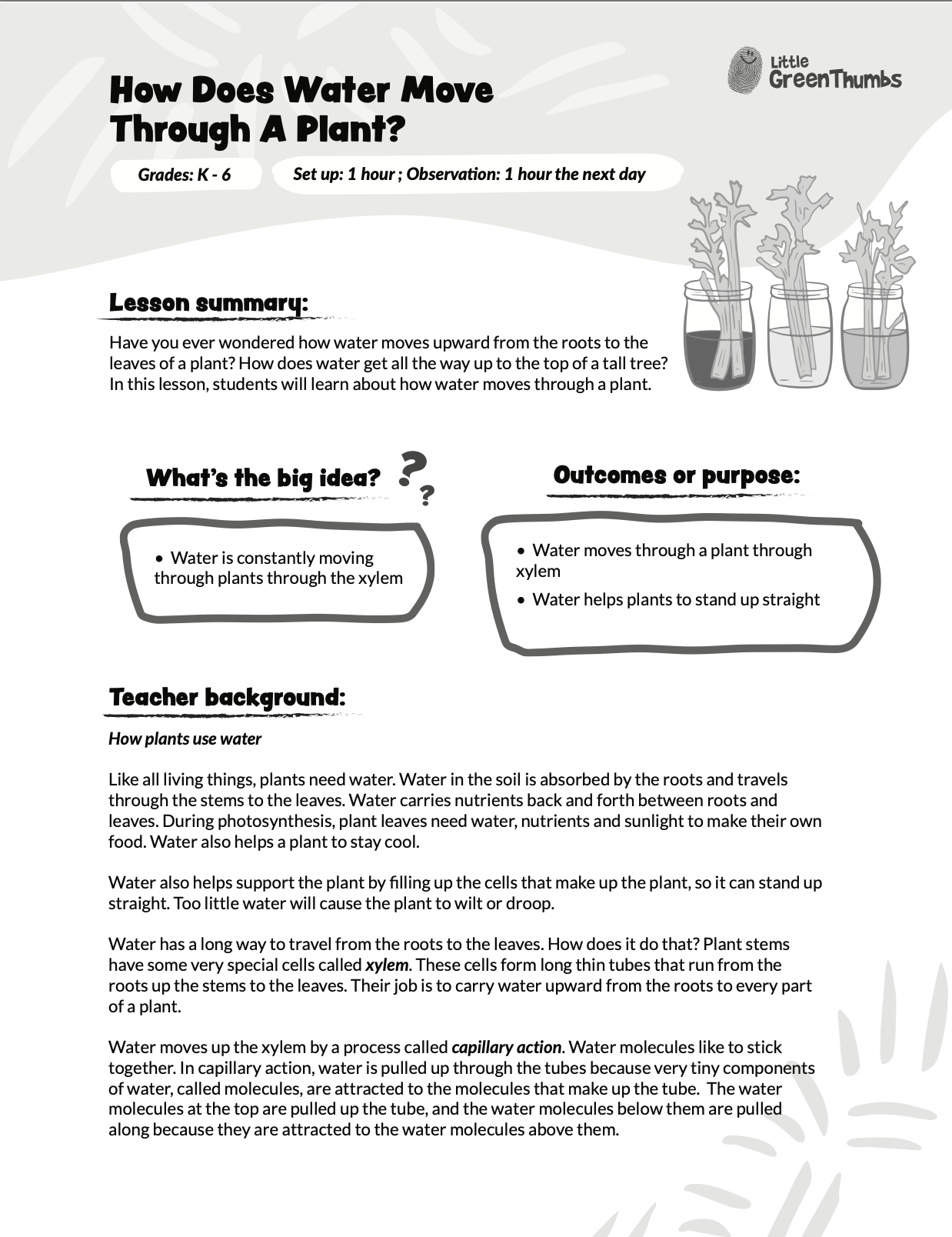Experiment: How does water move in a plant?
Grades: K – 6
Have you ever wondered how water moves upward from the roots to the leaves of a plant? How does water get all the way up to the top of a tall tree? In this lesson, students will learn about how water moves through a plant.
Set up: 1 hour
Observation: 1 hour the next day
Like all living things, plants need water. Water in the soil is absorbed by the roots and travels through the stems to the leaves. Water carries nutrients back and forth between roots and leaves. During photosynthesis, plant leaves need water, nutrients and sunlight to make their own food. Water also helps a plant to stay cool.
Water also helps support the plant by filling up the cells that make up the plant, so it can stand up straight. Too little water will cause the plant to wilt or droop.
Water has a long way to travel from the roots to the leaves. How does it do that? Plant stems have some very special cells called xylem. These cells form long thin tubes that run from the roots up the stems to the leaves. Their job is to carry water upward from the roots to every part of a plant.
Water moves up the xylem by a process called capillary action. Water molecules like to stick together. In capillary action, water is pulled up through the tubes because very tiny components of water, called molecules, are attracted to the molecules that make up the tube. The water molecules at the top are pulled up the tube, and the water molecules below them are pulled along because they are attracted to the water molecules above them.
Materials:
- 1 clear glass or plastic cup
- 1 whole stalk of celery
- Food colouring in assorted colour
- Sharp knife
- Cutting boar
- Water – warm or tepid is best
- Marker or popsicle stick

